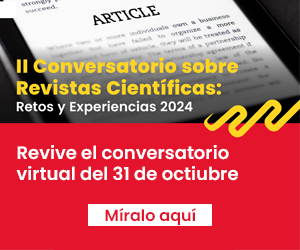Estudio histológico de las glándulas de meibomio en la llama (Lama glama)
Histological study of the meibomian glands in the llama (Lama glama)
DOI:
https://doi.org/10.20453/stv.v12i1.5079Keywords:
Lama glama, meibomian gland, tear filmAbstract
The objective of the study was to describe histologically the structural characteristics of the meibomian glands in the llama (Lama glama). These glands are annexed to the eye and contribute to the formation of one of the layers of the tear film responsible for protecting the cornea of the eye. Samples of eyeballs, including eyelids, were collected from five young llamas, from which the meibomian glands were dissected and extracted. The samples were stored in 10% buffered formalin and processed under the paraffin-embedding technique. They were cut, stained and analyzed under the microscope. The glands showed a large number of compound saccular adenomeres, surrounded by connective tissue composed of collagen fibers and blood vessels. Minor and major excretory ducts lined by non-keratinized flat stratified epithelium were observed. The adenomeres showed basal meibocytes that were small and round, central meibocytes of polyhedral shape containing lipid vesicles and superficial meibocytes with pyknotic nuclei, which subsequently disintegrate and show their remains in the lumen of the ducts. Comparison with the literature allows us to conclude that there is a coincidence with other species with respect to the type of adenomer and cell types. Regarding the number of adenomeres, there is similarity with the dromedary camel; in addition, the meibomian glands in llamas are more numerous than in other species and may be an adaptation of this species.
Downloads
References
Al-Ramadan, S. (2015). Histological features and muc1 distribution in the palpebral conjunctiva of the dromedary camel (Camelus dromedarius). Assiut Veterinary Medical Journal, 6(146), 179-186. https://doi.org/10.21608/avmj.2015.170231
Balah, A., El-Raheem, W., El-Baz, A. y El-Naseery, N. (2013). Histological and ultraestural satudy on the meiobian gland of camel (Camelus dromedarius). Zagazing Veterinary Journal, 41(2), 88-106. https://doi.org/10.21608/zvjz.2013.95686
Butovich, I., Lu, H., McMahon, A. y Eule, J. (2012). Toward an animal model of the human tear film: biochemical comparison of the mouse, canine, rabbit, and human meibomian lipidomes. Investigative Ophthalmology y Visual Science, 53(11), 6881. https://doi.org/10.1167%2Fiovs.12-10516.
Crespo-Moral, M., García-Posadas, L., López-García, A. y Diebold, Y. (2020). Histological and immunohistochemical characterization of the porcine ocular surface. PLoS ONE, 15(1), 1-17. https://doi.org/10.1371/journal.pone.0227732
Eurell, J. y Frappier, B. (2006). Dellmann´s Textbook of veterinary histology. Wiley-Blackwell.
Garza-Leon, M., Ramos-Betancourt, N., Beltrán-Diaz de la Vega, F. y Hernández-Quintela, E. (2017). Meibografía. Nueva tecnología para la evaluación de las glándulas de meibomio. Revista Mexicana de Oftalmología, 91(4), 165-171. https://doi.org/10.1016/j.mexoft.2016.04.007
Gasser, K., Fuchs-Baumgartinger, A., Tichy, A. y Nell, B. (2011). Investigations on the conjunctival goblet cells and on the characteristics of glands associated with the eye in the guinea pig. Veterinary Ophthalmology 14(1), 26-40. https://doi.org/10.1111/j.1463-5224.2010.00836.x
Henker, R., Scholz, M., Gaffling, S., Asano, N., Hampel, U., Garreis, F., Hornegger, J. y Paulsen, F. (2013). Morphological Features of the Porcine Lacrimal Gland and Its Compatibility for Human Lacrimal Gland Xenografting. PLoS ONE, 8(9), e74046. https://doi.org/10.1371/journal.pone.0074046
Holly, F. (2005). La película lagrimal: una parte del ojo pequeña pero altamente compleja. Archivos de la Sociedad Española de Oftalmología 80(2), 67-68.
Ibrahim, I., Kelany, A. y Taha, M. (1992). Comparative anatomical and histological studies on the meibomian (tarsal) glands in rabbits, cats, goats, sheep and cattle. Assiut Veterinary Mededical Journal, 28(55), 81-92. https://doi.org/10.21608/avmj.1992.186634
Kitamura, Y., Maehara, S., Nakade, T., Miwa, Y., Arita, R., Iwashita, H. y Saito, A. (2019). Assessment of meibomian gland morphology by noncontact infrared meibography in Shih Tzu dogs with or without keratoconjunctivitis sicca. Veterinary Ophthalmology, 22(6), 744-750. https://doi.org/10.1111/vop.12645
Knop, N. y Knop, E. (2009). Meibom-Drüsen: Teil I: Anatomie, embryologie und histologie der meibom-drüsen. Der Ophthalmologe, 106(10), 872-883. https://doi.org/10.1007/s00347-009-2006-1
Mayorga, M. (2008). Película lagrimal: estructura y funciones. Ciencia y Tecnología para la Salud Visual y Ocular, 1(11), 121-131. https://ciencia.lasalle.edu.co/cgi/viewcontent.cgi?article=1108&context=svo
McManus, L. y Mitchell, R. (eds.) (2014). Pathobiology of human disease: A dynamic encyclopedia of disease mechanisms. Elsevier.
Megías, M., Molist, P. y Pombal, M. (2018). Atlas de histología animal y vegetal: Técnicas histológicas. Departamento de Biología Funcional y Ciencias de la Salud. Facultad de Biología. Universidad de Vigo. https://mmegias.webs.uvigo.es/descargas/tecnicas-protocolos.pdf.
Prophet, E., Mills, B., Arrington, J. y Sobin, L. (eds.). (1995). Métodos histotecnológicos. Instituto de Patología de las Fuerzas Armadas de los Estados Unidos de América.
Quispe, E. (2011). Adaptaciones hematológicas de los Camélidos Sudamericanos que viven en zonas de elevadas altitudes. Revista Complutense de Ciencias Veterinarias, 5(1), 1-26. https://revistas.ucm.es/index.php/RCCV/article/view/RCCV1111120001A
Remington, L. (2012). Clinical anatomy and physiology of the visual system. Butterworth-Heinemann. https://doi.org/10.1016/C2009-0-56108-9
Singh, A., Gahlot. P. y Parkash, T. (2020). Histomorphochemical characterization of meibomian and ciliary glands of sheep (Ovis aries). Haryana Veterinarian, 59(2), 160-163. https://www.luvas.edu.in//haryana-veterinarian/download/harvet2020-dec/2.pdf
Sun, M., Moreno, I., Dang, M. y Coulson-Thomas, V. (2020). Meibomian gland dysfunction: What have animal models taught us? International Journal of Molecular Sciences, 21(22), 1-25. https://doi.org/10.3390/ijms21228822
Treuting, P., Dintzis, S. y Montine, K. (2018). Comparative anatomy and a mouse, rat, and human atlas histology. Academic Press. https://doi.org/10.1016/C2014-0-03145-0
Voigt, S., Fuchs-Baumgartinger, A., Egerbacher, M., Tichy, A. y Nell, B. (2012). Investigations on the conjunctival goblet cells and the characteristics of the glands associated with the eye in chinchillas (Chinchilla laniger). Veterinary Ophthalmology, 15(5), 333-344. https://doi.org/10.1111/j.1463-5224.2011.00989.x
Downloads
Published
How to Cite
Issue
Section
License
Copyright (c) 2024 Los autores

This work is licensed under a Creative Commons Attribution 4.0 International License.
All articles published in Salud y Tecnología Veterinaria are under a Creative Commons Reconocimiento 4.0 International license.
The authors retain the copyright and grant the journal the right of first publication, with the work registered with the Creative Commons License, which allows third parties to use what is published whenever they mention the authorship of the work, and to the first publication in this magazine.
Authors can make other independent and additional contractual agreements for the non-exclusive distribution of the version published in this journal, provided they clearly indicate that the work was published in this journal.
The authors can file in the repository of their institution:
The research work or thesis of degree from which the published article derives.
The pre-print version: the version prior to peer review.
The Post-print version: final version after peer review.
The definitive version or final version created by the publisher for publication.












